Nine Pitt undergrads attended archaeology field schools in summer 2023 assisted by grants from the CCA and Department of Anthropology
Our amazing undergrads participated in field and lab work in Greece, Belize, Poland and Ireland.
Read their stories:
Brandon Torres (Belize):
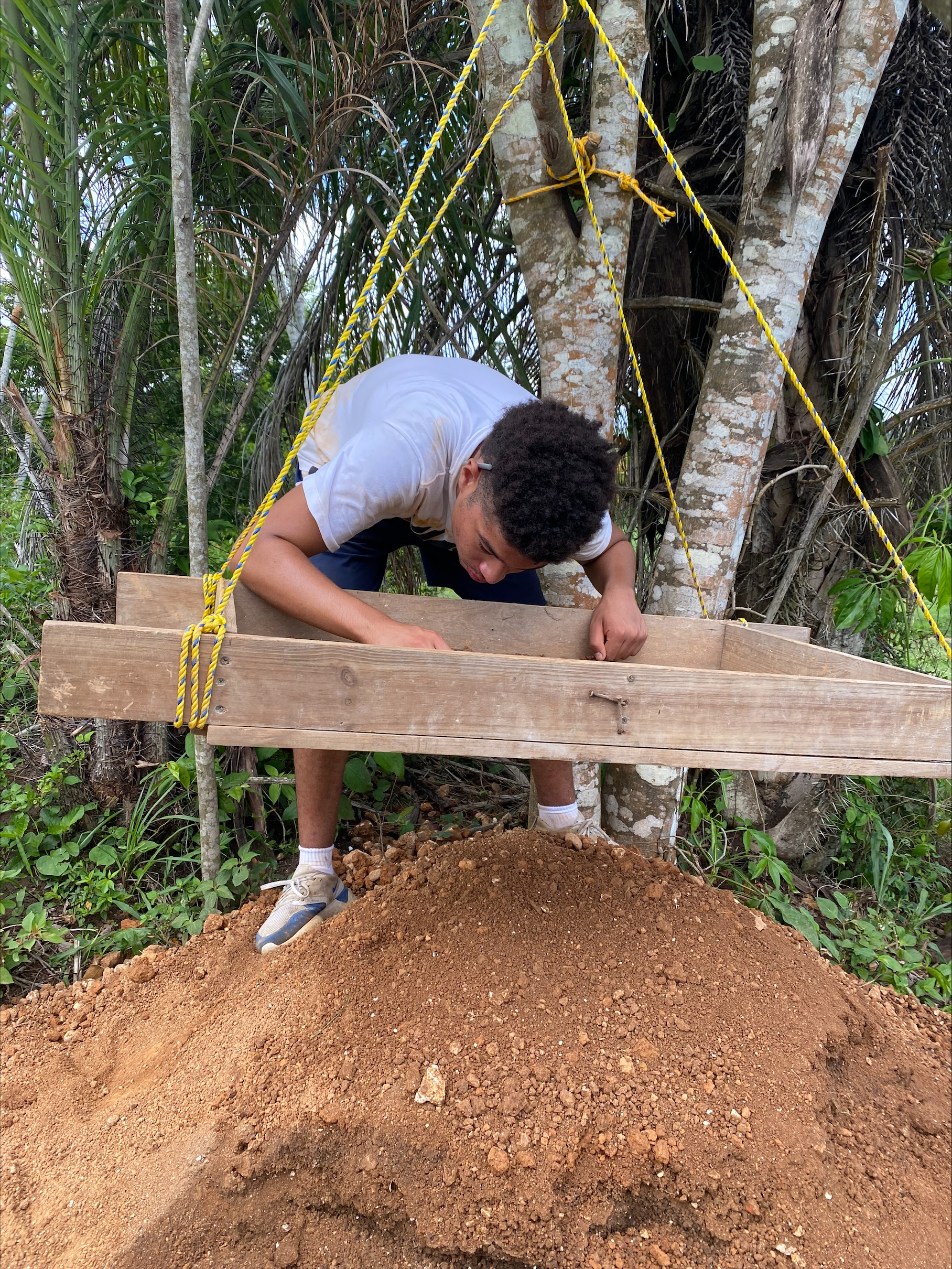
“This summer I spent two months excavating with BVAR, a field school in Belize that focuses on Maya archaeology. The goal of these excavations was to uncover how labor and food networks were structured during the collapse of the Maya Empire. My time with BVAR allowed me to gain firsthand experience in unit organization, artifact preservation, site mapping, and other archaeological techniques.As someone who wishes to pursue a career in Mesoamerican archaeology, I can say that the experience will be an invaluable asset for my future pursuits. I want to thank the Center for Comparative Archaeology and the Anthropology Department at Pitt for providing me with the opportunity to participate this summer.”
Maighread Southard-Wray (Ireland) – far right in photo:
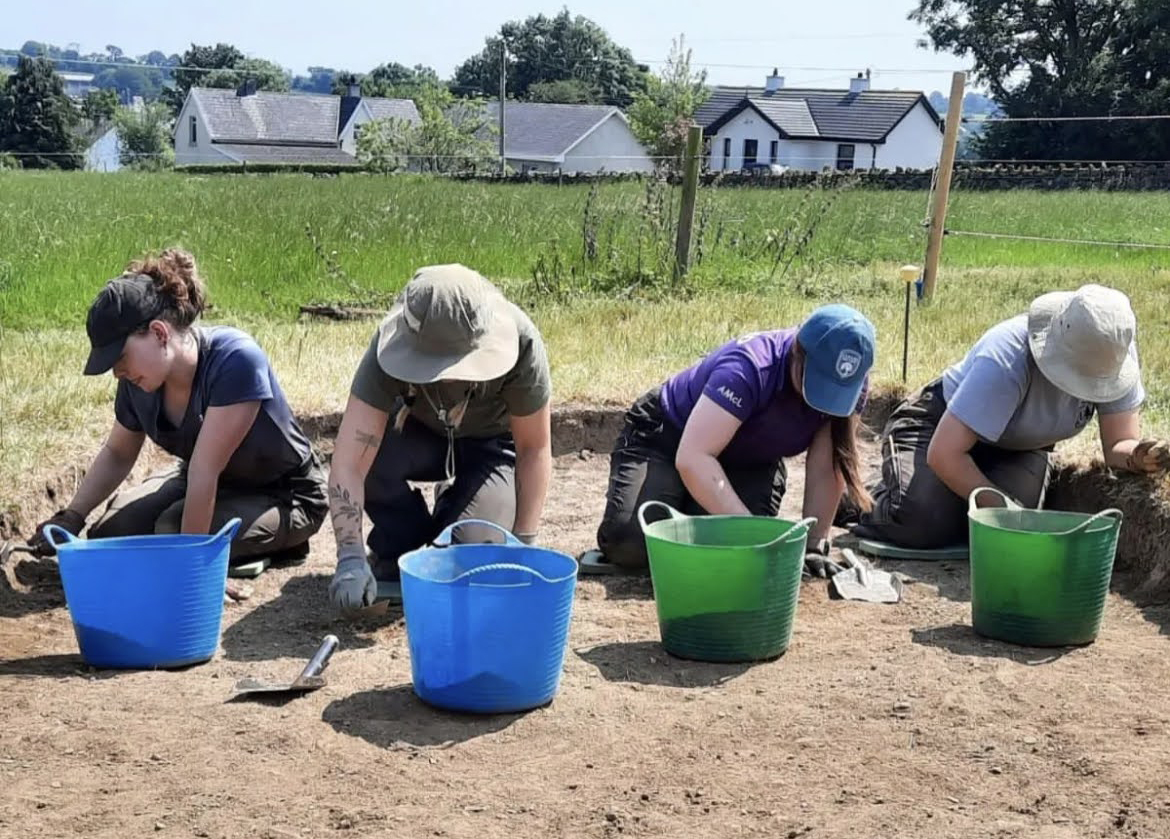
“This photo is from opening cutting 6 at St Mary's Abbey in Ferns, Co. Wexford, Ireland. Ferns was the capital of medieval Leinster and boasts a number of archaeological sites. Many of these are multi-period sites which saw significant utilization during the medieval era. The focus of this excavation was a multi-period religious site where St Mary's Abbey and St Aidan's Monastery both stood. The primary focus of this season's excavations were the cloistral ranges of St Mary's Abbey (Cutting 5) and a geophysical anomaly southeast of the monastic buildings (Cutting 6).”
Katelyn Johnson (Belize):
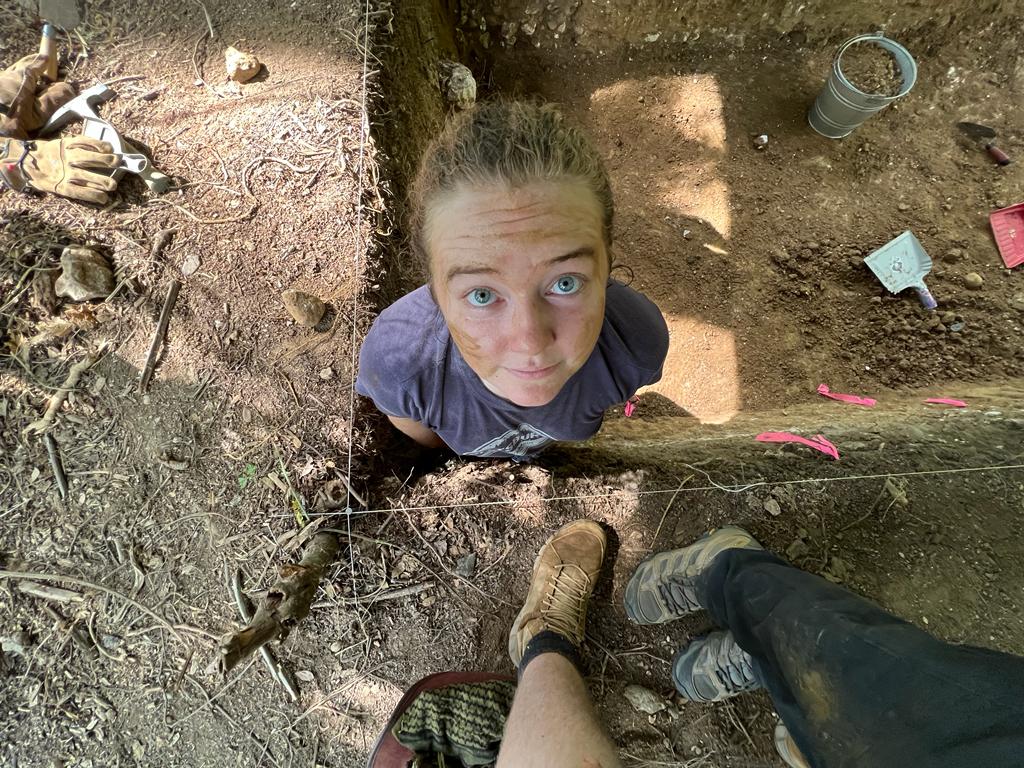
“This summer, I participated in BVAR (Belize Valley Archaeological Reconnaissance Project), a 4-week long archaeological field school program in San Ignacio, Belize. While I was there, I worked on a plaza excavation at the Classic Maya site of Baking Pot. One primary purpose of our excavation was to investigate rates of construction of monumental architecture at Baking Pot with respect to the Classic Maya collapse. Through BVAR, I cultivated skills pertaining to archaeological excavation, field mapping, and the proper handling and documentation of cultural remains. Furthermore, BVAR provided me with a deep appreciation for Pittsburgh’s temperate climate and lack of fire ants.”
Jia Tucker (Poland):
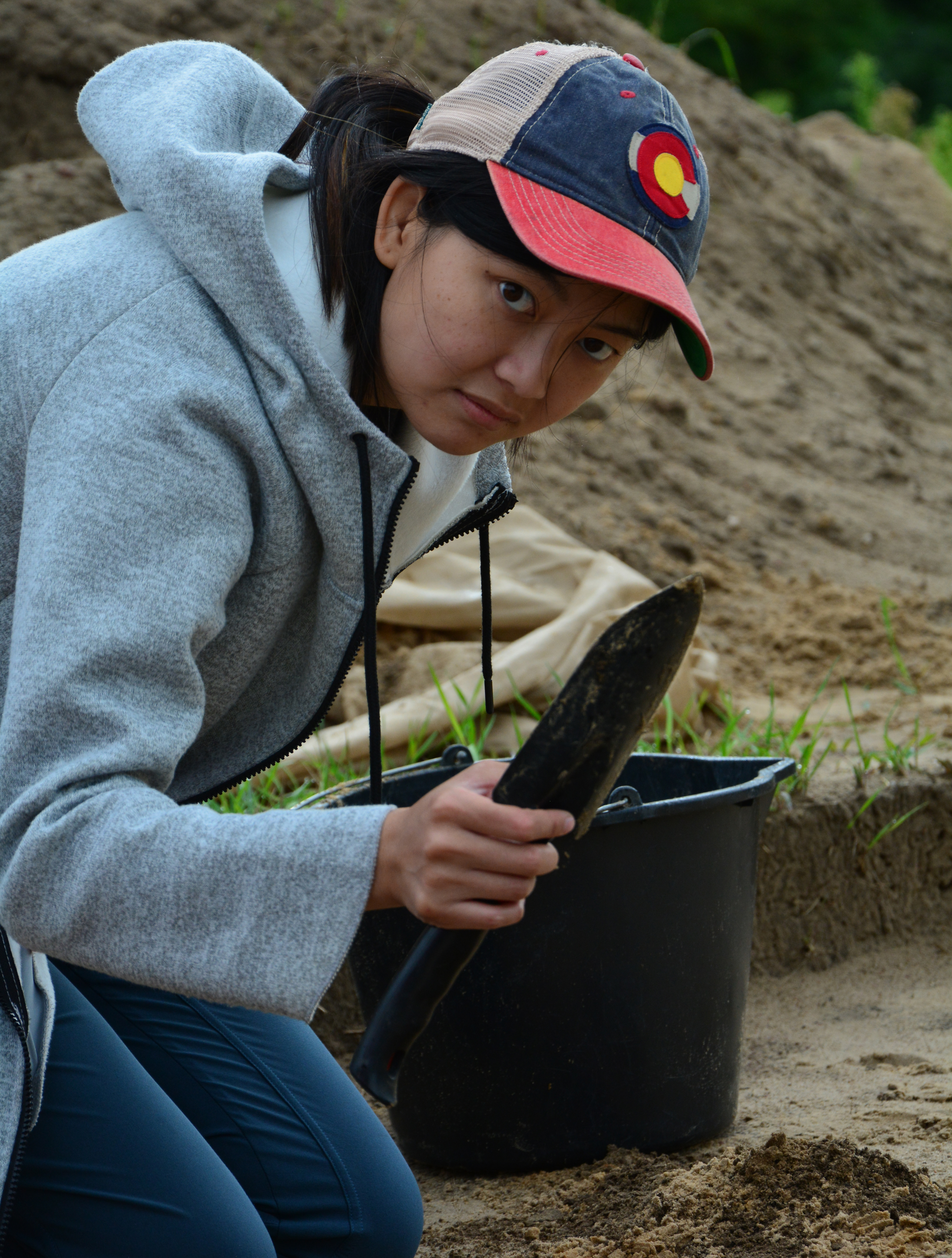
“This past summer, I uncovered remains from a cemetery in a 14th-16th century village in Poland. We did work in and out of the lab analyzing human remains and contextualizing their burials. As my first experience in the field — and my first time getting a sunburn — it was a great opportunity to learn more about how one “does” archaeology! If you’re curious about osteology, do check out the Slavia foundation.”
Meghan Hannum (Greece):
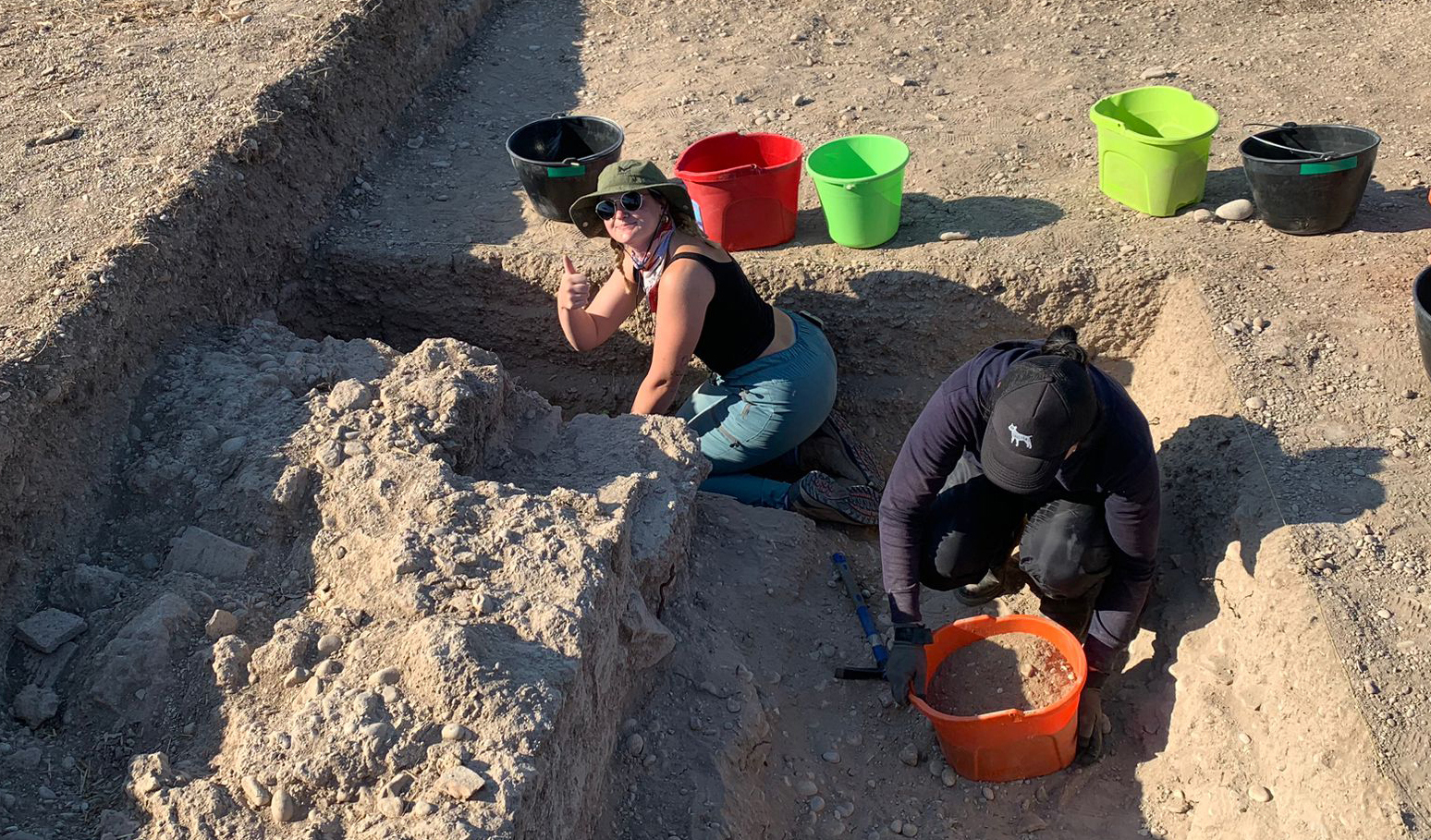
“This summer I had the privilege of excavating as part of the Lechaion Harbor Settlement and Land Project in Lechaio, Greece. This experience not only taught me how to excavate effectively and responsibly but also allowed me to form deep connections with both my peers and supervisors. I had the time of my life with some of the best people I’ve ever met through our mutual love of archaeology!”
Katarina Stefanik (Poland):
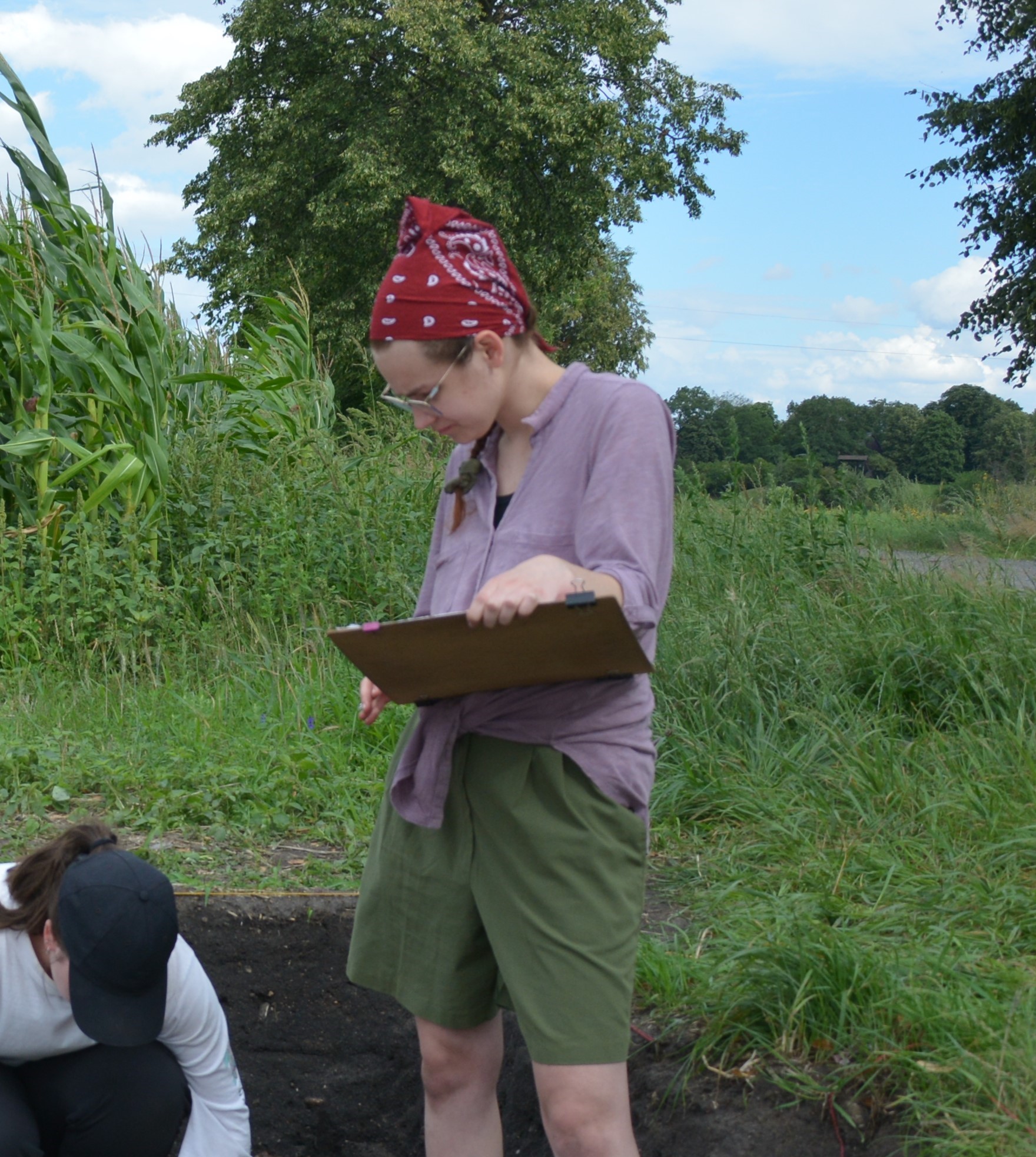
“I had a wonderful time working on Giecz 10 in Poland! My favorite experience was mapping a grave, seen in this photo. It involved leaning over the grave for more than an hour, but it was so satisfying to see a to-scale image of the grave. The field school was such an enriching experience with amazing instructors. Learning hands-on at a field school is so different from classroom learning, and the school greatly improved my osteology skills and gave me a more well-rounded understanding of archeology. I would recommend the Slavia Project to anyone interested in bioarcheology!”
Abby Dzwik (Greece):
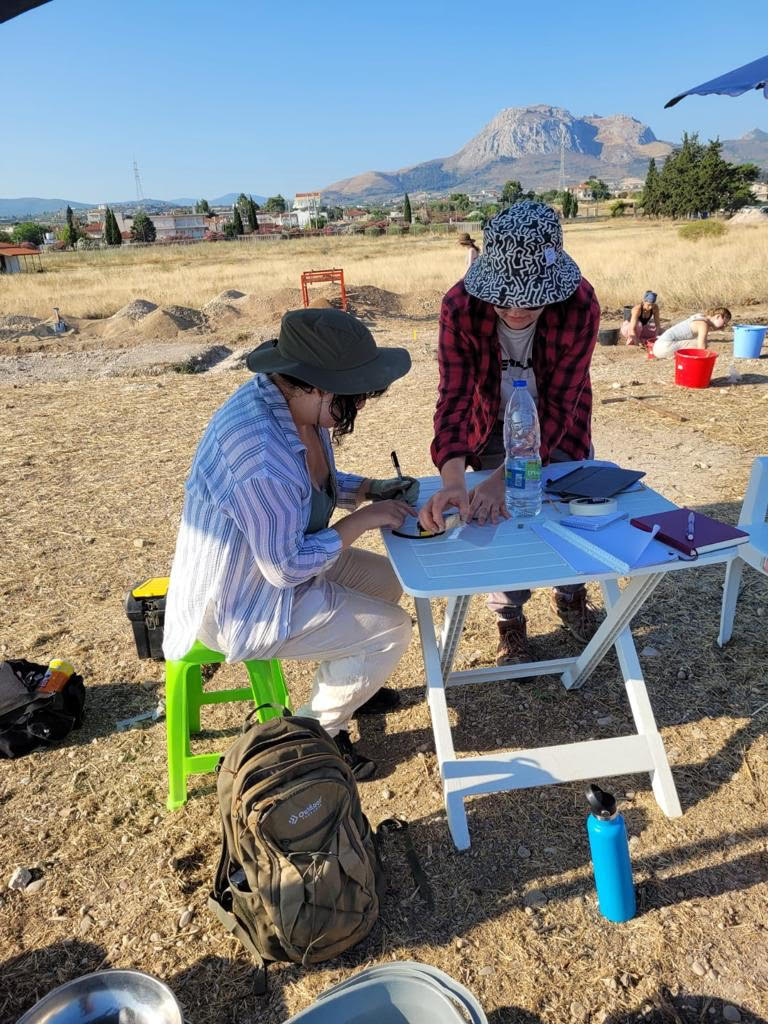
“I attended an archaeological field school through the Lechaion Harbor and Settlement Land Project (LHSLP), which studies the land installations and settlement of Ancient Corinth’s primary harbor. The project offered me a more abstract and hands-on understanding of archaeology, as well as an opportunity to step out of the tourist mindset and become part of a Greek village. Although being able to visit the beach after work was certainly fun, one of the most rewarding aspects of this experience was interacting with professionals specializing in geomorphology, epigraphy, numismatics, faunal analysis, and ceramic analysis.”
Anna Trimble (Greece):

“This summer I participated in the Lechaion Harbour and Land Settlement Project through California State University Long Beach. This excavation took place in Lechaio, which is a village in Ancient Corinth, Greece. The site itself acted as a Roman port city for trade that connected to the Gulf of Corinth. During the excavation, I learned how to operate a sifting screen, performed various excavation methods, cleaned and analyzed artifacts, and shadowed many field experts who specialized in pottery, glass and faunal remains. In this image, our trench team was excavating a destruction layer from a room in a larger building. We had laid out a grid system using measuring tapes and ground control points from a RTK receiver. We then individually bagged soil samples from each square for flotation. Much of the destruction layer consisted of fragmented pottery, floor and roof tiles, shards of glass, mortar, concrete, and coins. ”
Carsen Hanley-Witzel (Belize):
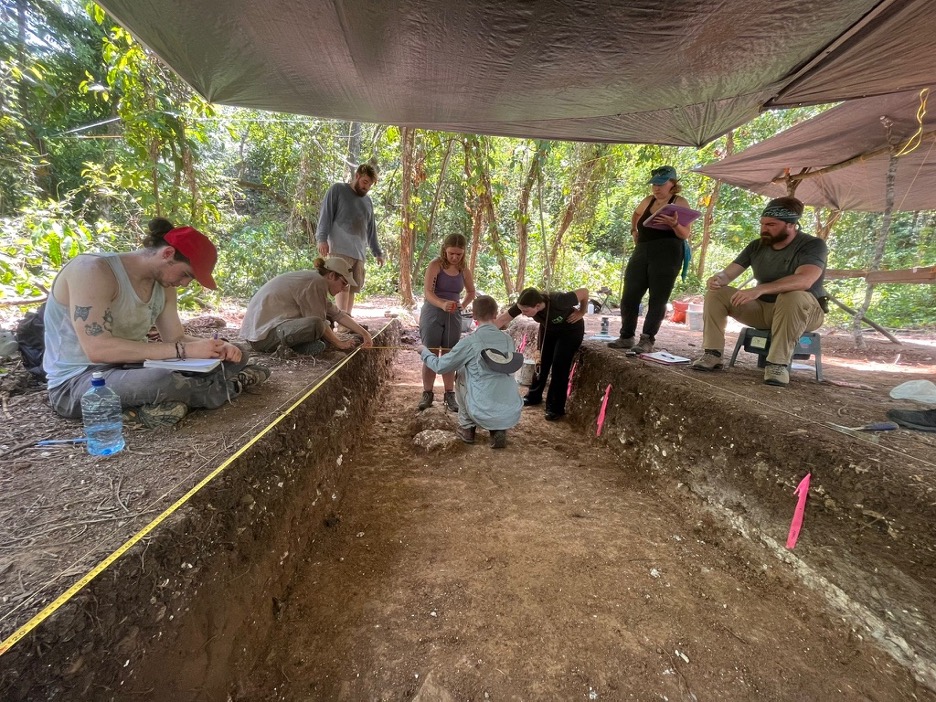
“My experience at field school was great because of the scholarship and was an irreplaceable experience given the crucial practical methods I learned for excavation. It also solidified my plans to go into bioarchaeology after being able to shadow the osteologist for a few days. It was awesome to be able to get to really experience what a dig was like, and it made me feel a lot more secure in my decision to pursue archaeology in my post-graduate studies, as it was hard, physical work, but something I learned I really enjoyed about the job. In addition to learning from excavating the unit, being able to talk with mentors and peers further along in their career for advice and resources was so important to me and figuring out a path for my future professional and academic plans and I hope to keep these relationships for years to come. What I would tell other people about field school is to expect to be exhausted from the physical labor, but playing in the dirt and excavating is one of the most enriching and intellectually rewarding experiences of my life. Going to field school overall made me excited to be an archaeologist again after years of undergrad.”
The Importance of Fieldwork
Field schools are the first hands-on archaeology field experience for most undergrad students, and a required first step for more serious involvement. However, the cost can pose significant obstacles for students. The CCA will continue this grant program in 2024, with a short application due early in the spring semester.
